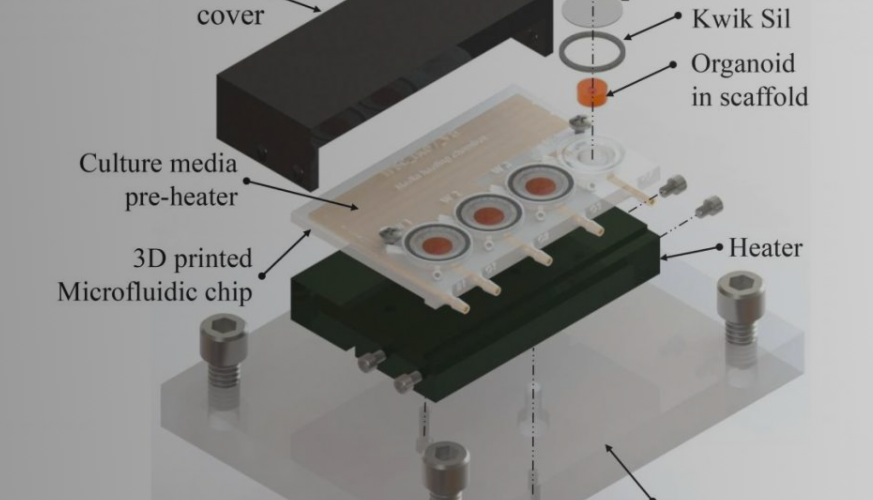Small device contains wells to let small bits of tissue grow, develop, and be studied in real time
Source: [Picower News | April 7, 2021]
Scientists from The Picower Institute for Learning and Memory at MIT and the Indian Institute of Technology Madras have grown small amounts of self-organizing brain tissue, known as organoids, in a tiny 3D-printed system that allows observation while they grow and develop. The work is reported in Biomicrofluidics, by AIP Publishing.
Current technology for real-time observation of growing organoids involves the use of commercial culture dishes with many wells in a glass-bottomed plate placed under a microscope. The plates are costly and only compatible with specific microscopes. They do not allow for the flow or replenishment of a nutrient medium to the growing tissue.
Recent advances have used a technique known as microfluidics, where a nutrient medium is delivered through small tubes connected to a tiny platform or chip. These microfluidic devices are, however, expensive and challenging to manufacture.
The current advance uses 3D printing to create a reusable and easily adjustable platform that costs only about $5 per unit to fabricate. The design includes imaging wells for the growing organoids and microfluidic channels to provide a nutrient medium and preheating that supports tissue growth.
Above: A 3D-printed microfluidic bioreactor for organ-on-chip cell culture. Image credit: Ikram Khan
By efficiently growing and sustaining organoids, neuroscientists can develop powerful models of brain development, both with healthy and disease-causing genetic backgrounds, said co-author Mriganka Sur, Newton Professor in the Picower Institute and MIT’s Department of Brain and Cognitive Sciences.
“The 3D printed bioreactor is an exciting new way to grow brain organoids long-term and observe their dynamics during normal and abnormal development,” Sur said. “Combined with our lab’s innovative technologies for imaging organoids noninvasively in situ, this provides a new way to observe the dynamics of cortical development in organoids, and how they go awry in disorders of brain development.”

